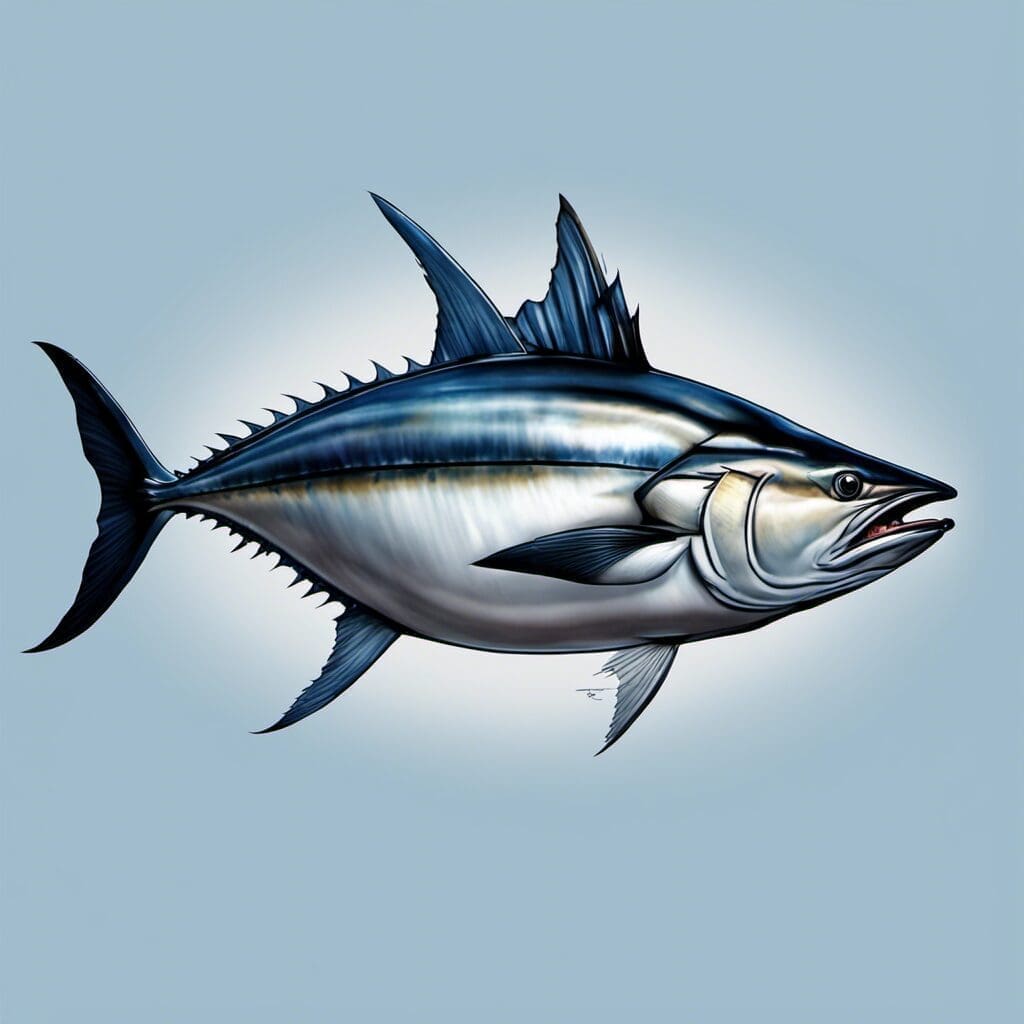Introduction
The Bluefin Tuna, scientifically known as Thunnus thynnus, belongs to the mackerel family Scombridae. It’s one of the largest fish species reaching up to 3 meters (10 ft) in length, astoundingly fast, and popular for both commercial and sport fishing.
Conservation Status
According to the International Union for the Conservation of Nature (IUCN), the Atlantic Bluefin Tuna is currently listed as “Endangered.” Overfishing, especially for sushi and sashimi markets, is the primary cause for their decline. Numerous conservational efforts are in place, including catch limits, farming practices, and promoting public awareness of their plight.
Statistics
| Stat | Average | Range |
|---|---|---|
| Length | 2 m (6.6 ft) | 0.5 – 3 m (1.6 – 10 ft) |
| Weight | 250 kg (550 lb) | 35 – 680 kg (77 – 1500 lb) |
| Average Lifespan | 15-20 Years | n/a |
| Swimming Speed | Approximately 75 km/h (47 mph) | n/a |
Distribution
Bluefin Tuna are highly migratory and distributed throughout the Atlantic Ocean, from the Arctic Circle to the Equator. Notable populations exist near Europe, North America, the Gulf of Mexico, and the Mediterranean Sea. They undertake extensive migrations for foraging and spawning.
Habitats
This species predominantly inhabits open water, especially in the warmer upper layer of the ocean. They prefer water temperatures from 15 to 29 °C (59 – 84 °F) but are capable of tolerating colder waters.
When and Where to See
Bluefin Tuna are generally observed during their feeding times, early morning or late afternoon. Seasonally, they’re more common in the summer and fall.
Best Fishing Locations
- Massachusetts Bay, USA
- Gulf of Mexico, USA
- North Carolina, USA
- Mediterranean Sea, near Spain, France, and Italy
- Cape Cod, USA
- New Zealand
How to Catch
Bluefin Tuna respond well to a variety of bait, including mackerel, herring, and squid. Chumming is a common method to attract them. Trolling and stand-up fishing are typical techniques. Early morning and late afternoon are often the best times for fishing.
Identification Guide
Bluefin Tuna have a distinct bullet-shaped body, dark blue/black on top and silver/white below, with a gold coruscation covering the body and bright yellow caudal finlets. They’re often confused with Bigeye Tuna, but Bluefins have shorter pectoral fins.
Culinary
Bluefin Tuna has a rich, full flavor making it popular for raw preparations like sushi and sashimi. Its lean, red meat can be pan-seared or grilled. Bluefin is a good source of lean protein, and rich in Omega-3 fatty acids.
Additional Information
The Bluefin Tuna are renowned for their power and speed, which play a crucial role in their feeding habits. They’re apex predators, preying upon various fish species. Their primary natural predators are few, mainly Orca and larger sharks, while the main threat to their existence is commercial fishing.
References and Further Reading
For more information, resources such as National Geographic, BBC Wildlife and the Food and Agriculture Organization of the UN offer in-depth details about the Bluefin Tuna.

